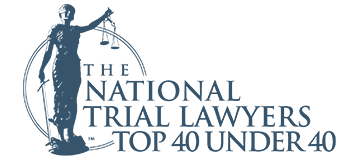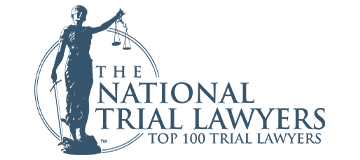
To prove clergy abuse, you must understand what counts as clergy abuse and provide solid evidence of the abuse. Our Ohio clergy abuse lawyers can help define clergy abuse, gather evidence, and hold the clergy members accountable.
We understand that surviving clergy abuse can be incredibly traumatic, and we are here to help you seek compensation and justice. Our team has over 100 years of combined experience and is ready to build a strong case for you.
What Counts As Clergy Abuse?
Several different types of clergy abuse warrant a clergy abuse lawsuit. Some of the common types of abuse include:
Sexual Abuse
Sexual abuse by clergy is one of the most common forms of misconduct. It involves any non-consensual sexual activity or inappropriate behavior perpetrated by a member of the clergy.
This can include sexual assault, molestation, rape, coerced sexual acts, or engaging in sexual relationships with congregants, mainly when there is a power imbalance or exploitation of trust. Clergy sexual abuse is unfortunately common among children involved in the church. But it can happen to vulnerable adults, too.
Emotional and Psychological Abuse
Clergy abuse can also manifest as emotional and psychological harm inflicted by religious leaders. This may involve manipulation, coercion, intimidation, or exerting undue influence on people within their congregations.
Emotional and psychological abuse can cause severe distress, trauma, and long-term psychological effects on victims.
Physical Abuse
Physical abuse by clergy refers to the use of physical force or violence against people within the religious community. This can include physical assault, physical punishment, corporal punishment, or any form of physical harm intended to cause pain, injury, or control over others.
Physical abuse can also lead to or result from sexual abuse. If you’ve been abused in either way, you have the right to hold the liable clergy member accountable. Our Ohio civil rights lawyers can help you recover compensation and get justice.
Financial Exploitation
Clergy abuse can extend to financial exploitation, where religious leaders misuse their influence and authority to exploit people financially. Some signs of financial exploitation include:
- Misuse of funds: Unexplained or unauthorized use of church funds, including unaccounted-for expenses, excessive personal spending by clergy or staff, or lavish purchases unrelated to the church’s mission.
- Lack of financial transparency: Limited access to financial records or reluctance to provide financial reports to the congregation or appropriate governing bodies within the church.
- Overemphasis on financial contributions: Placing undue pressure on congregants to make financial contributions, using guilt or manipulation tactics to encourage giving, or setting unrealistic giving targets.
- Unauthorized access to church finances: Only a select few people or a single person have complete control over church finances, with little to no oversight or accountability.
- Inconsistent financial documentation: Discrepancies or inconsistencies in financial records, such as missing receipts, altered financial statements, or unexplained gaps in financial documentation.
For a free legal consultation, call (614) 481-6000
Gather Evidence to Prove Clergy Abuse
One of the first steps, and most important, is gathering evidence of the abuse that took place. Our lawyers can help you gather evidence such as:
Documentation and Records
You should gather relevant documentation and records demonstrating the abuse’s impact. These may include medical records, therapy records, hospital reports, counseling notes, and any other documents that indicate physical or psychological harm resulting from the abuse.
These records will provide valuable evidence of the injuries, treatment received, and the long-term effects of the abuse.
Witness Testimony
You should gather witness testimonies to strengthen your case. Witnesses may include other victims of clergy abuse or individuals who know about the abuse or its cover-up.
Church members or staff who witnessed suspicious behaviors or received disclosures from victims can also provide valuable testimonies. Witness testimonies can provide firsthand accounts that corroborate your allegations and establish patterns of abuse.
Photographs and Video
If you have photographs or videos that capture incidents of abuse or show visible signs of physical injuries, they can serve as compelling evidence. Preserve any such visual evidence, including photographs of bruises, scars, or other visible signs of abuse.
Diary Entries
If you have kept diaries or journals where you documented your experiences, emotions, or interactions with the abuser, they can be valuable evidence. These personal accounts can provide insights into the abuse, your state of mind, and the impact it had on your life.
Detailed descriptions of the abuse incidents and the emotional toll they took on you can be powerful evidence.
Calculate Your Damages Resulting from the Abuse
As a survivor of clergy abuse, our team can help you prove clergy abuse by adding up the economic and non-economic damages you’ve suffered. By doing so, you’ll have a list of damages to show what the abuse has caused you. Common damages that you could recover include:
- Medical expenses: Costs associated with medical treatment, therapy, medications, rehabilitation, and any other necessary healthcare services resulting from the abuse.
- Lost wages: Compensation for income lost due to the abuse, including missed work, reduced work capacity, or the need to change careers.
- Future earnings: Anticipated loss of future income or earning capacity due to the long-term consequences of the abuse.
- Property damage: Reimbursement for any damage incurred due to the abuse, such as damaged personal belongings or property.
- Pain and suffering: Compensation for physical and emotional pain, suffering, and trauma endured as a result of the abuse.
- Emotional distress: Damages awarded for psychological harm, including anxiety, depression, post-traumatic stress disorder (PTSD), or other mental health conditions caused by the abuse.
- Loss of enjoyment of life: Compensation for the loss of ability to enjoy life’s pleasures and activities due to the lasting effects of the abuse.
- Loss of consortium: Damages awarded to the spouse or partner of the victim for the loss of companionship, affection, support, and sexual relations resulting from the abuse.
Click to contact our personal injury lawyers today
Learn More About How to Prove Clergy Abuse
After clergy abuse, it’s time to hold the liable clergy member accountable. Our team of Ohio civil rights attorneys can help you start building your clergy abuse case.
By gathering evidence, tracking your losses, and recognizing abuse, you can prove clergy abuse. Contact us today for a free consultation.
Call or text (614) 481-6000 or complete a Free Case Evaluation form















































